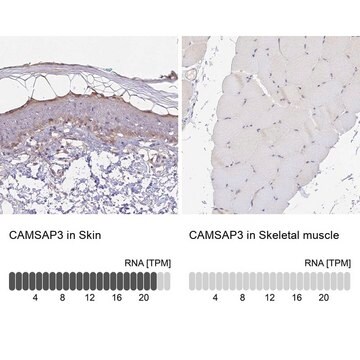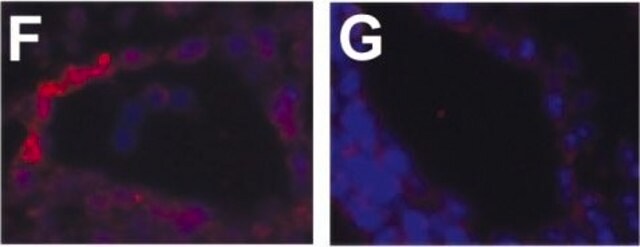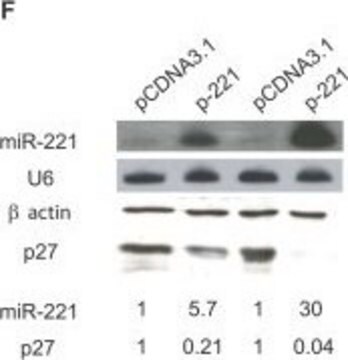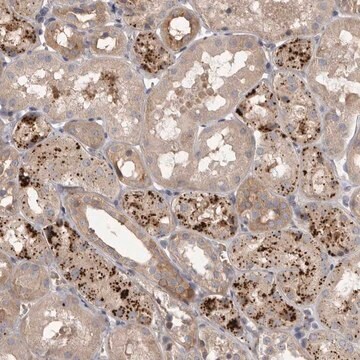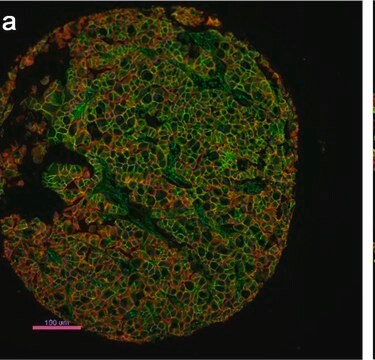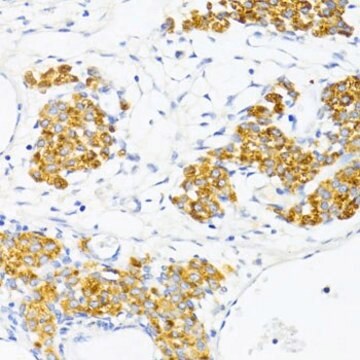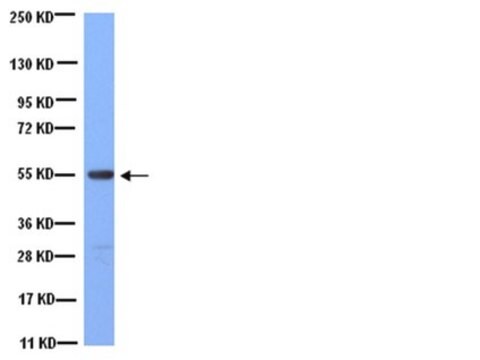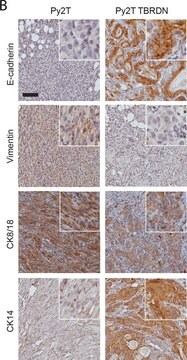SAB4200415
Anti-NEZHA antibody, Mouse monoclonal
clone NEZHA-1, purified from hybridoma cell culture
Sinónimos:
Anti-CAMSAP3, Anti-Calmodulin regulated spectrin-associated protein family member 3, Anti-KIAA, Monoclonal Anti-NEZHA antibody produced in mouse
About This Item
Productos recomendados
biological source
mouse
Quality Level
conjugate
unconjugated
antibody form
purified from hybridoma cell culture
antibody product type
primary antibodies
clone
NEZHA-1, monoclonal
form
buffered aqueous solution
mol wt
antigen ~150 kDa
species reactivity
canine, human
concentration
~1.0 mg/mL
technique(s)
immunoprecipitation (IP): suitable
indirect immunofluorescence: suitable
western blot: 2.5-5.0 μg/mL using whole extracts of human SW480 cells
isotype
IgG1
UniProt accession no.
shipped in
dry ice
storage temp.
−20°C
target post-translational modification
unmodified
Gene Information
human ... CAMSAP3(57662)
mouse ... Camsap3(69697)
General description
Immunogen
Application
- immunofluorescence
- immunoprecipitation
- immunofluorescence
- mass-spectrometry-based analysis of a streptavidin pull-down assay
- immunostaining
Biochem/physiol Actions
Physical form
Disclaimer
¿No encuentra el producto adecuado?
Pruebe nuestro Herramienta de selección de productos.
Storage Class
10 - Combustible liquids
flash_point_f
Not applicable
flash_point_c
Not applicable
Elija entre una de las versiones más recientes:
Certificados de análisis (COA)
¿No ve la versión correcta?
Si necesita una versión concreta, puede buscar un certificado específico por el número de lote.
¿Ya tiene este producto?
Encuentre la documentación para los productos que ha comprado recientemente en la Biblioteca de documentos.
Global Trade Item Number
| Número de referencia del producto (SKU) | GTIN |
|---|---|
| SAB4200415-200UL | 4061837875533 |
Nuestro equipo de científicos tiene experiencia en todas las áreas de investigación: Ciencias de la vida, Ciencia de los materiales, Síntesis química, Cromatografía, Analítica y muchas otras.
Póngase en contacto con el Servicio técnico